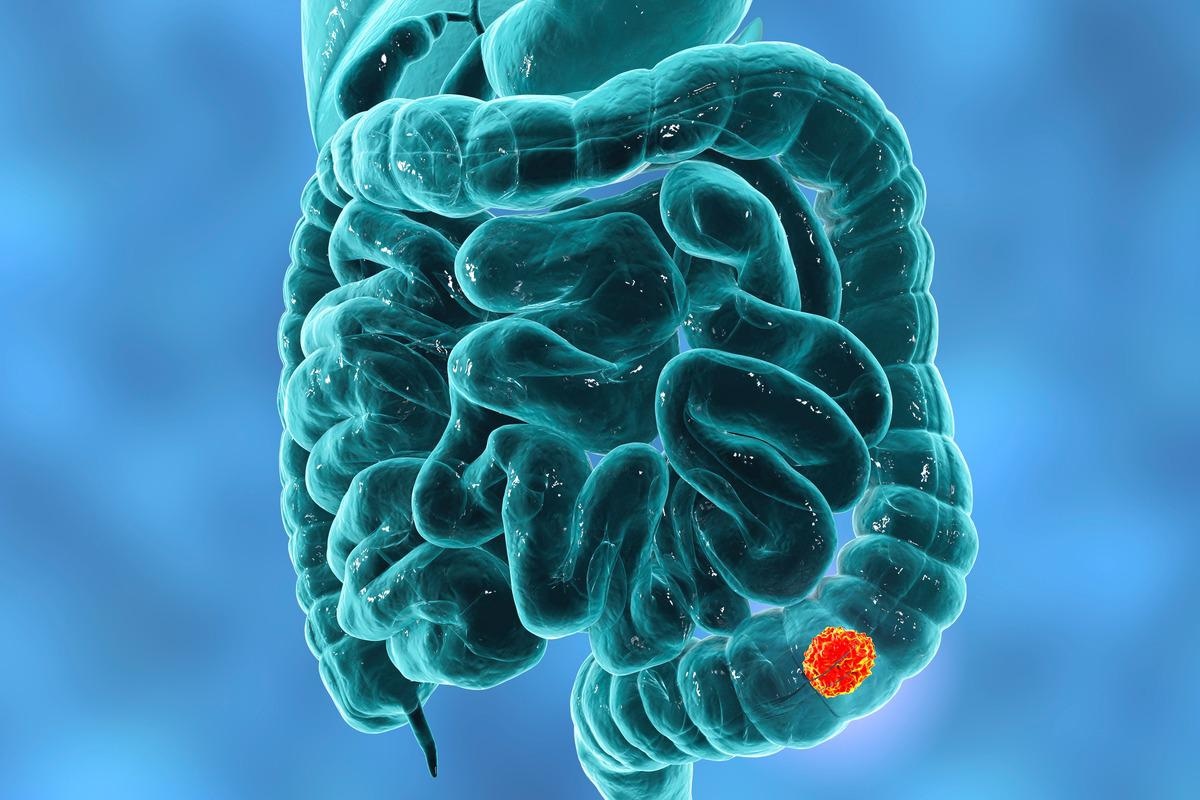Colorectal cancer (CRC) is a leading cause of cancer-related death worldwide. Pathological diagnosis using biopsy samples acquired during a colonoscopy (CS) is the gold standard for CRC diagnosis. CS screening has a high percentage of CRC and adenomas identification, but it is not extensively used for screening testing due to its invasiveness and expensive cost. The fecal immunochemical test (FIT) has been extensively accepted as a screening method for CRC detection. The multitarget stool DNA screening test, which detects CRC-related genetic alterations, was developed in recent years to diagnose CRC; nevertheless, there is inadequate data to justify its use instead of FIT.
 Study: A Novel Urinary miRNA Biomarker for Early Detection of Colorectal Cancer. Image Credit: Kateryna Kon/Shutterstock
Study: A Novel Urinary miRNA Biomarker for Early Detection of Colorectal Cancer. Image Credit: Kateryna Kon/Shutterstock
Although serum tumor indicators such as carcinoembryonic antigen (CEA) and carbohydrate antigen 19-9 (CA19-9) are frequently employed as non-invasive CRC markers during medical examinations, they are ineffective as screening tools due to their low sensitivity. As a result, developing a non-invasive biomarker for the early detection of CRC is critical. MicroRNAs (miRNAs) are non-coding RNAs that regulate the expression of target genes by preventing messenger RNA from being degraded. Their abnormal expression appears to have a role in cancer development.
MiRNAs are protected from degradation and considered highly stable under varied storage settings because they form complexes with Argonaute proteins, some lipids, and microvesicles when transported. As a result, they should be used as biomarkers. Because of its non-invasiveness, ease of handling, and low cost, urine is an excellent sample for medical examinations.
In this work published in Cancers, a group of researchers set out to develop and validate urine biomarkers for diagnosing gastric cancer (GC) and colorectal cancer (CRC). Furthermore, the authors discovered a urine miRNA biomarker that can diagnose GC and esophageal cancer (EC). In light of this, the authors conducted this research to find reliable and non-invasive urine miRNA biomarkers for CRC.
The study
Eight of the 11 potential miRNAs discovered by microarray research showed inconsistent urine sample expression. As a result, in the second training cohort, the authors used qRT-PCR to quantify three miRNAs. The CRC group had significantly greater urine expression levels of miR-129-1-3p, miR-566, and miR-598-5p than the healthy control (HC) group, according to univariate analysis. In addition, multivariate analysis demonstrated that urinary levels of miR-129-1-3p and miR-566 were independent indicators for CRC diagnosis.
Based on these findings, the researchers used a logistic regression model to create a CRC diagnostic biomarker panel consisting of urinary miR-129-1-3p and miR-566. With an area under curve (AUC) of 0.811, this urine miRNA biomarker panel has sufficient ability to differentiate patients with CRC from HC individuals, which was greater than either miR-129-1-3p or miR-566 alone. This logistic regression model exhibited good efficacy for diagnosing CRC when the cut-off point was set at the Youden index, with 80.7% sensitivity, 70.7% specificity, and 75.7% accuracy.
Because background factors can influence urine miRNA expression, the authors looked at the link between urinary miRNA levels and clinical parameters. Although there was no correlation between age, degree of differentiation, or serum creatinine level and urine miRNA expression, both urinary miRNAs were considerably greater in females than males. The established urine miRNA biomarker panel exhibited promising efficacy in both the male and female cohorts with an AUC = 0.882, and gender was not significant in the multivariate analysis.
The authors then looked into the ability to diagnose early-stage CRC. Both urinary miR-129-1-3p and miR-566 levels were substantially greater in the stage 0/I CRC group than in the HC group in a comparison between HC volunteers and patients with early-stage CRC. With an AUC of 0.845, this urine miRNA biomarker panel had excellent power to identify patients with stage 0/I CRC from HC subjects. The expression levels of miR-129-1-3p and miR-566 in urine, on the other hand, did not correspond with the disease stage.
Both miR-129 and miR-566 had no link with the overall survival of patients with rectal cancer in Kaplan–Meier curves based on the Kaplan–Meier Plotter. This urine biomarker outperformed currently utilized tumor markers regardless of illness stage. This urinary combination biomarker panel had a sensitivity of 82.8% for stage 0/I CRC, but serum CEA and CA19-9 only had a sensitivity of 11.1% for stage 0/I CRC. These findings imply that the well-established urine biomarker panel can be used as a non-invasive screening method for CRC detection.
Implications
This study demonstrated that the urinary biomarker panel combining miR-129-1-3p and miR-566 is a novel diagnostic non-invasive biomarker to detect CRC, even at an early stage. While the sensitivity of FIT for detecting advanced adenoma (i.e., stage 0 CRC) was reportedly 11–56%, the urinary biomarker showed good sensitivity of 82.8% for detecting stage 0/I CRC patients. Although the two methods cannot be directly compared, the established urinary miRNA biomarker might overcome FIT in point of early detection of CRC.
- Iwasaki, H. et al., 2022. A Novel Urinary miRNA Biomarker for Early Detection of Colorectal Cancer. Cancers, 14(2), p.461. doi: http://dx.doi.org/10.3390/cancers14020461. https://www.mdpi.com/2072-6694/14/2/461
Posted in: Medical Science News | Medical Research News | Disease/Infection News
Tags: Adenoma, Antigen, Biomarker, Biopsy, Cancer, Cancer Diagnosis, Carbohydrate, Colonoscopy, Colorectal, Colorectal Cancer, Creatinine, Diagnostic, DNA, Efficacy, Esophageal Cancer, Gastric Cancer, Genes, Genetic, Lipids, Microarray, Research, RNA, Tumor
.jpg)
Written by
Colin Lightfoot
Colin graduated from the University of Chester with a B.Sc. in Biomedical Science in 2020. Since completing his undergraduate degree, he worked for NHS England as an Associate Practitioner, responsible for testing inpatients for COVID-19 on admission.
Source: Read Full Article
